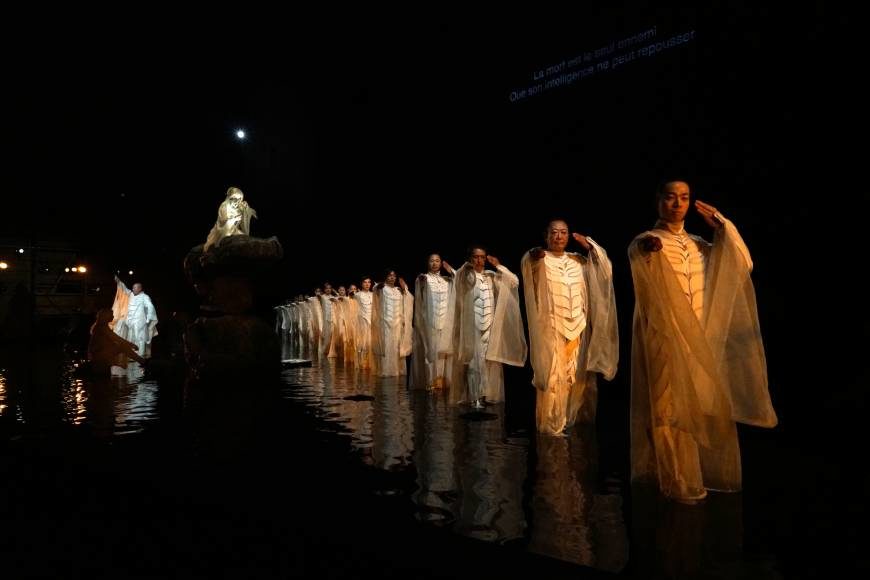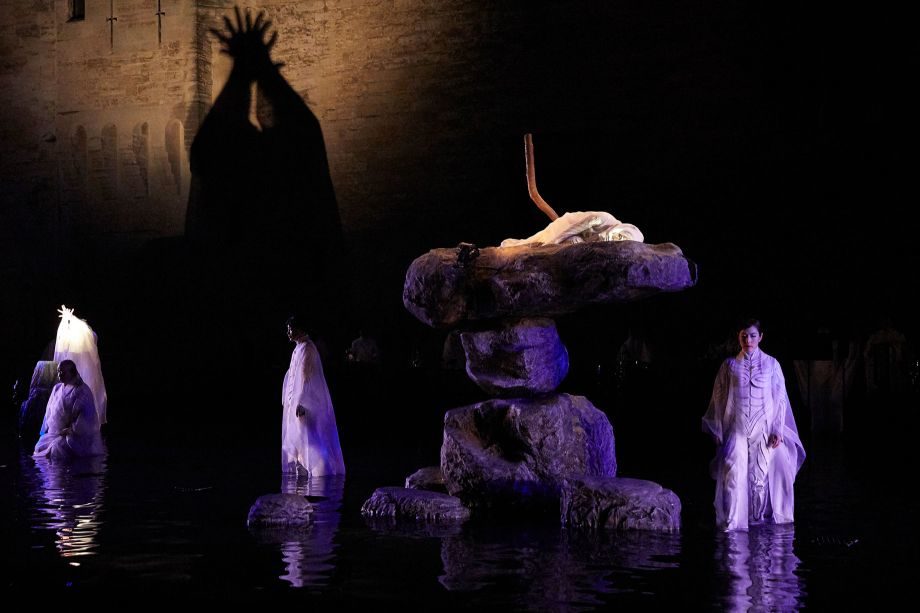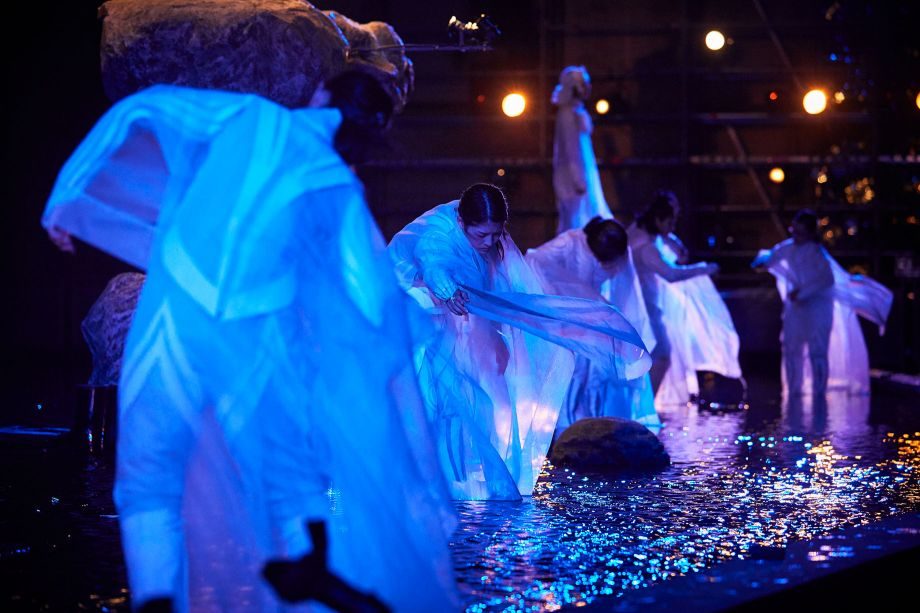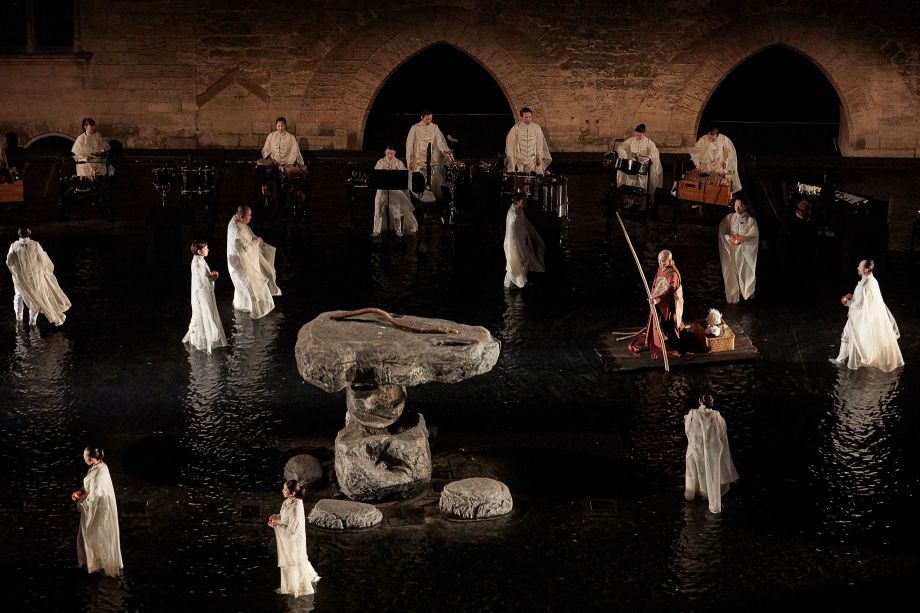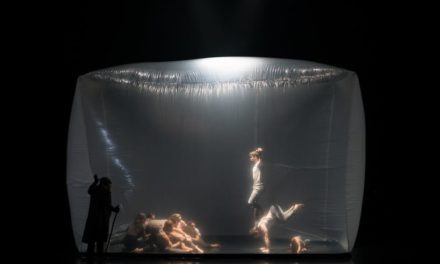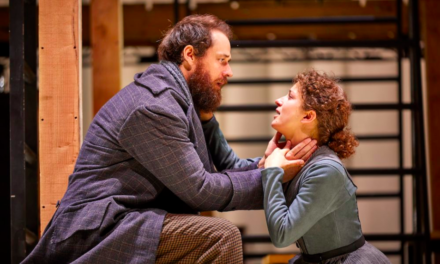The government’s Cool Japan initiative may be focused on spreading anime around the world, but Japanese culture scored a significant victory in France earlier this month in the world of theater.
Director Satoshi Miyagi, 58, became the first Asian dramatist to present the opening play at the renowned Avignon Festival, which started in 1947. His production of the Greek classic Antigone was performed on July 6 in the open-air Honors Courtyard at the 14th-century Palais des Papes (Papal Palace) — a roofless, 1,976-seat setting surrounded by stone walls that are 25 meters high.
Miyagi didn’t just make history that night, however, he made a lot of people very happy judging by the long standing ovation he received. In his Antigone, expressionless actors in beautiful white kimono-style costumes moved slowly around in almost ankle-deep water that covered a huge stage on which boulders were positioned and piled up to resemble a Buddhist stone garden.
In the original drama by Sophocles, two rival warrior brothers kill each other in battle, but while one of their bodies is honored the other is left out for the dogs and birds to snack on. In his version of the piece, Miyagi drew on death-related metaphors such as Bon festival dancing and spirit boats with candles launched on the pool — not as Oriental gimmicks, but as a new way of seeing this ancient play through the prism of Japanese culture.
How did such a production win over the crowd in Avignon? Miyagi’s forbear in spirit, the late Yukio Ninagawa, often cast doubt on the universality of theater, insisting theatrical works didn’t need to have a global, multicultural approach in order to work.
From this it follows that each production is born of its creator’s cultural background — so in “Ninagawa Macbeth” the story becomes that of a samurai commander and is presented on a stage made to look like a giant butsudan (household Buddhist altar). The result winds up being something fresh and new, not just appropriation of another country’s culture.
Though Miyagi’s Antigone was still the one audiences knew, the Buddhist way of treating the dead as equal souls toward whom no bitterness remains was a fresh and exciting reading they’d not experienced before — just as Miyagi, like Ninagawa used to, astonished them with his strikingly Japanese aesthetics.
As the French-Swiss daily newspaper Le Temps put it, commenting on Miyagi’s “unique Japanese approach” to Antigone: “They come from the land of tea (Miyagi’s SPAC festival is based in a famous tea- growing area) and their brew is hallucinogenic.”
If done right, local interpretations of stories from other countries are a surefire way for Japanese artists to wow people overseas. Cool Japan should take note.
This article was originally posted on TheJapanTimes. Reposted with permission of the author.
This post was written by the author in their personal capacity.The opinions expressed in this article are the author’s own and do not reflect the view of The Theatre Times, their staff or collaborators.
This post was written by Nobuko Tanaka.
The views expressed here belong to the author and do not necessarily reflect our views and opinions.

